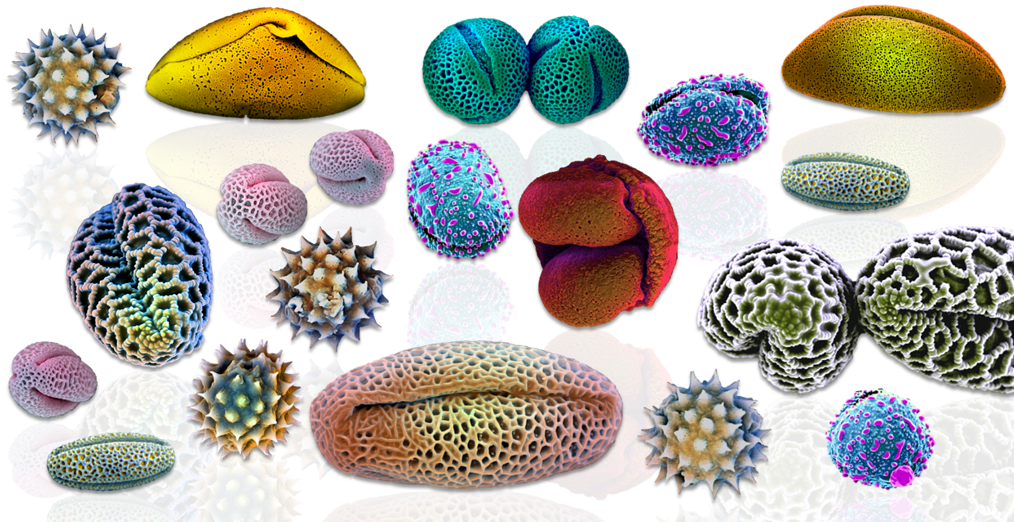This is our World
I am a biological electron microscopist by training and I am always fascinated by the amazing diversity of natural structures that can be seen when putting samples in an electron microscope. For example, the composite image of different pollen grains as seen with a scanning electron microscope shows a huge variety in the pollen from our garden and household plants. At all scales of life, structure is an inherent part of how all living things function, from animals, plants, organs, cells, bacteria, viruses, proteins and macromolecules. There is a massive diversity within organisms as well as within species and across the families and kingdoms of life, which is one of the reasons studying biology is both interesting and challenging.

We are still a long way off from understanding the world around us. We don’t even know how many species are on the planet. Between 1.4 and 1.8 million species have been identified so far and more are being discovered each day. The world is a wonderful rainbow of diversity. However, we are also losing species at between 1000 and 10,000 times the natural extinction rate. We are currently in the 6th mass extinction event (the last one being the death of the dinosaurs) and this time a single species, humans, is the cause.
In a relatively short space of time, the decline in diversity in agriculture means we have lost more than 90% of crop varieties and 50% of domesticated animals (source: Convention on Biological Diversity https://www.cbd.int/idb/2019/). Fishing stocks are constantly being pushed to their limits. Reduction in biodiversity also affects the use of traditional medicines and the production of new ones. It is important to preserve the diversity of species in the wild also. The air we breathe is due to oxygen production by plants and algae. Many of the foods we eat are the result of insect pollination. Our world is an intricate balance of different life forms with all of them depending on each other in a complex arrangement of interactions. We need to work at reducing the rate of species extinction, decreasing our environmental impact and attempting to preserve our ecological balance as much as possible.
There are small ways we can help as individuals. These include recycling, making sure that we take responsibility for where we source the products we consume and purchase, and reducing the amount of waste that goes to landfill. We can work on clearing up litter such as participating in beach cleans or just in our own neighbourhood. We can help local wildlife by creating log piles for insects, planting bee-friendly wildflowers, not cutting lawns as often and making solitary bee homes. There are many other small steps that can help to make a local difference and there is a lot of information online about what can be done in public spaces or in your own home. Commercial businesses also have a responsibility to the environment. Oxford Instruments is committed to reducing our environmental impact and some of the sustainable practises we have implemented over the past few years are available here. These include a zero waste to landfill scheme that we have implemented across several of our sites, which means that waste is either recycled directly or indirectly by being used to produce energy. Oxford Instruments monitors the carbon footprint of our business practises and has been successful in reducing our carbon footprint each year for the past few years.
This is our world. We need to work together to help preserve its biodiversity.
Are you doing your part to maintain the world that we live in? Comment below with how you or your company is working to preserve biodiversity.





